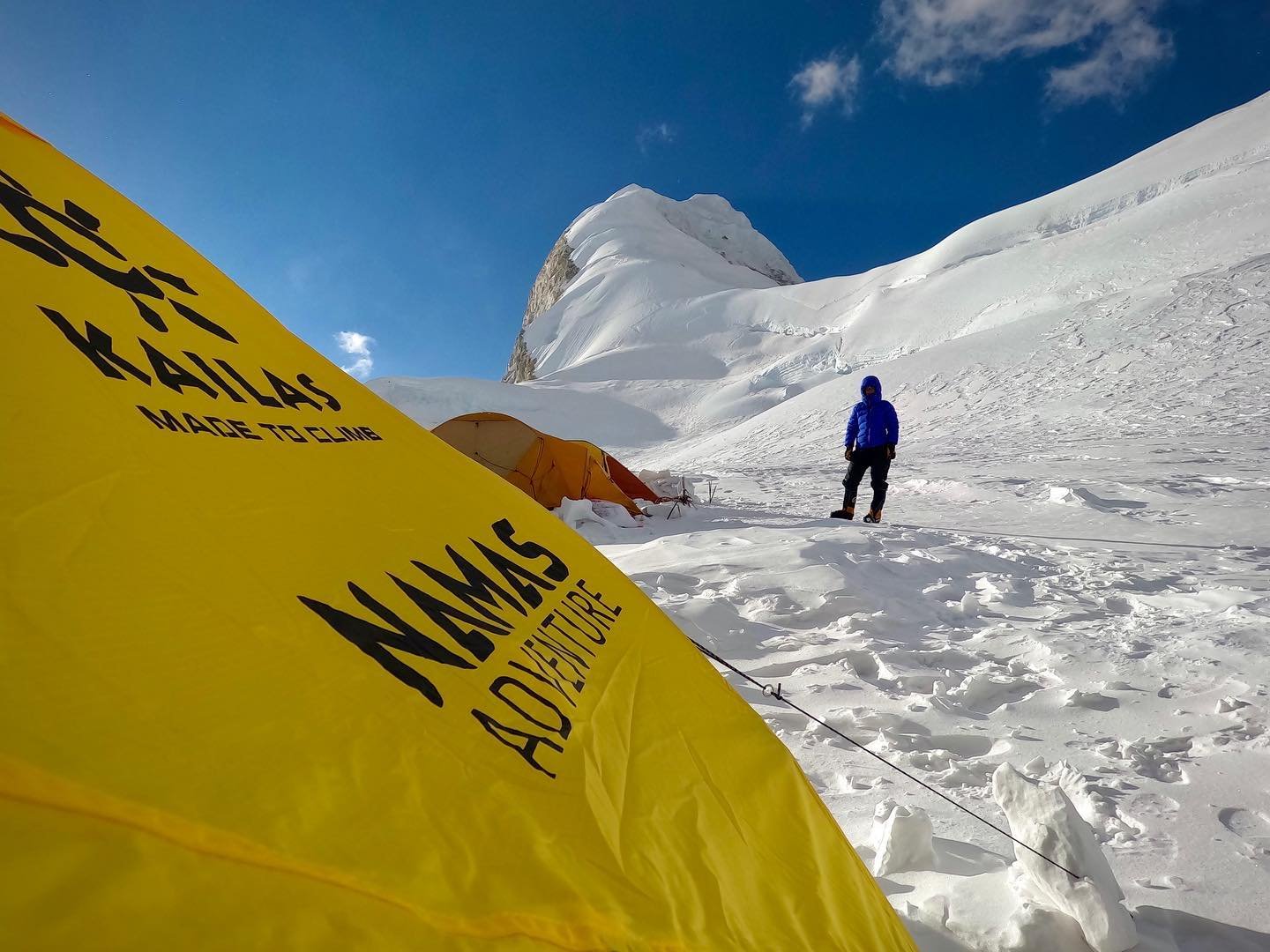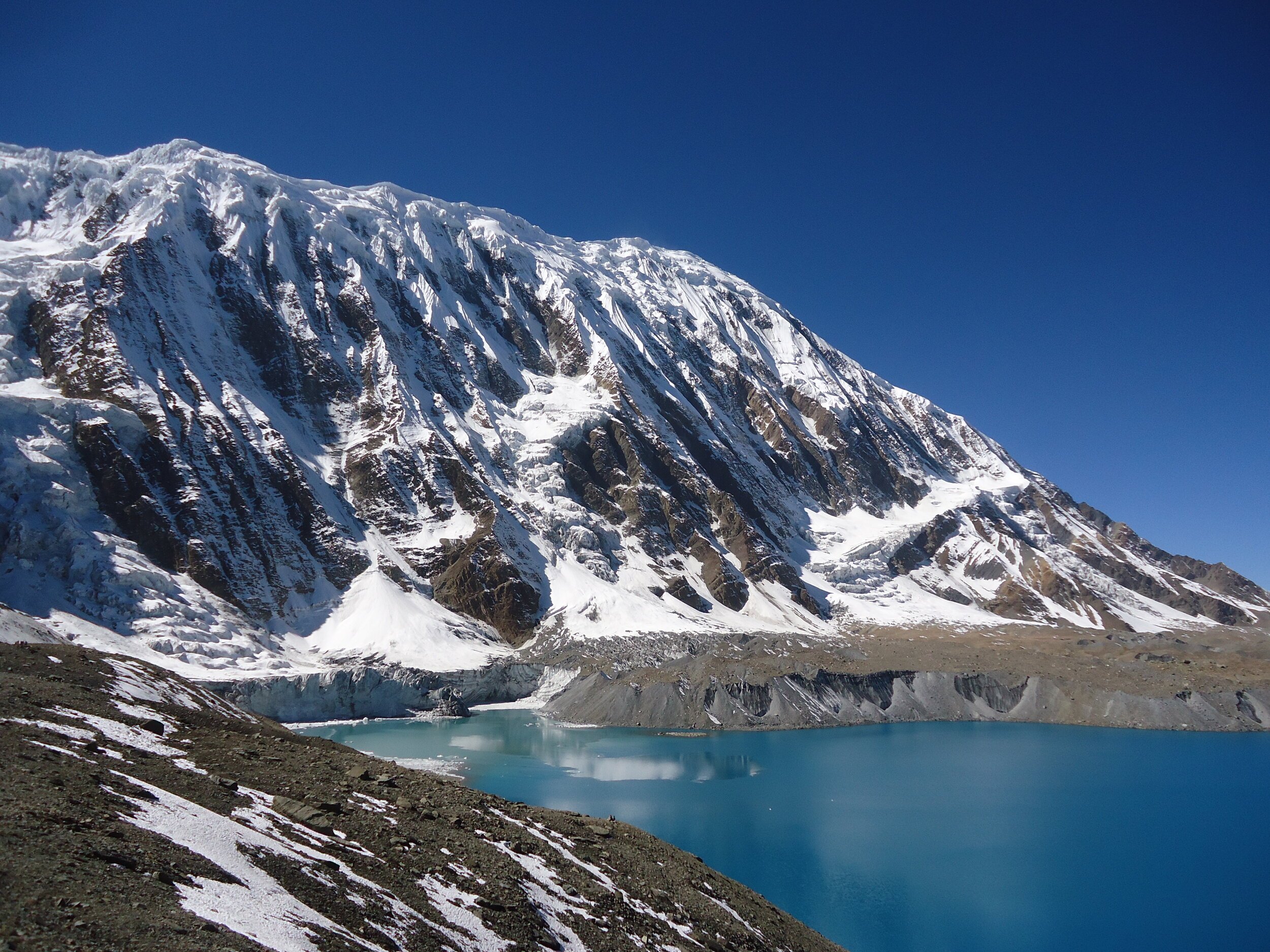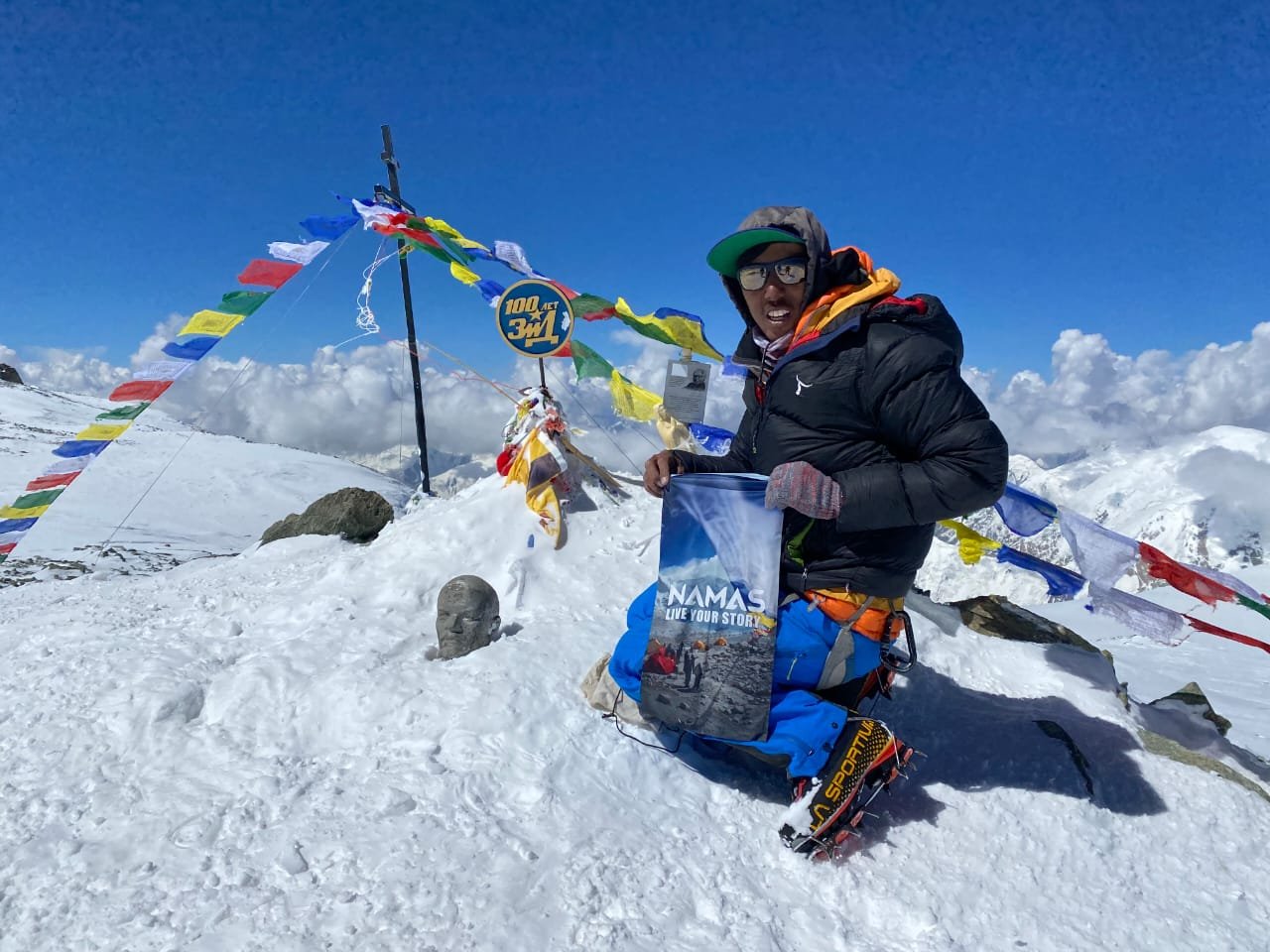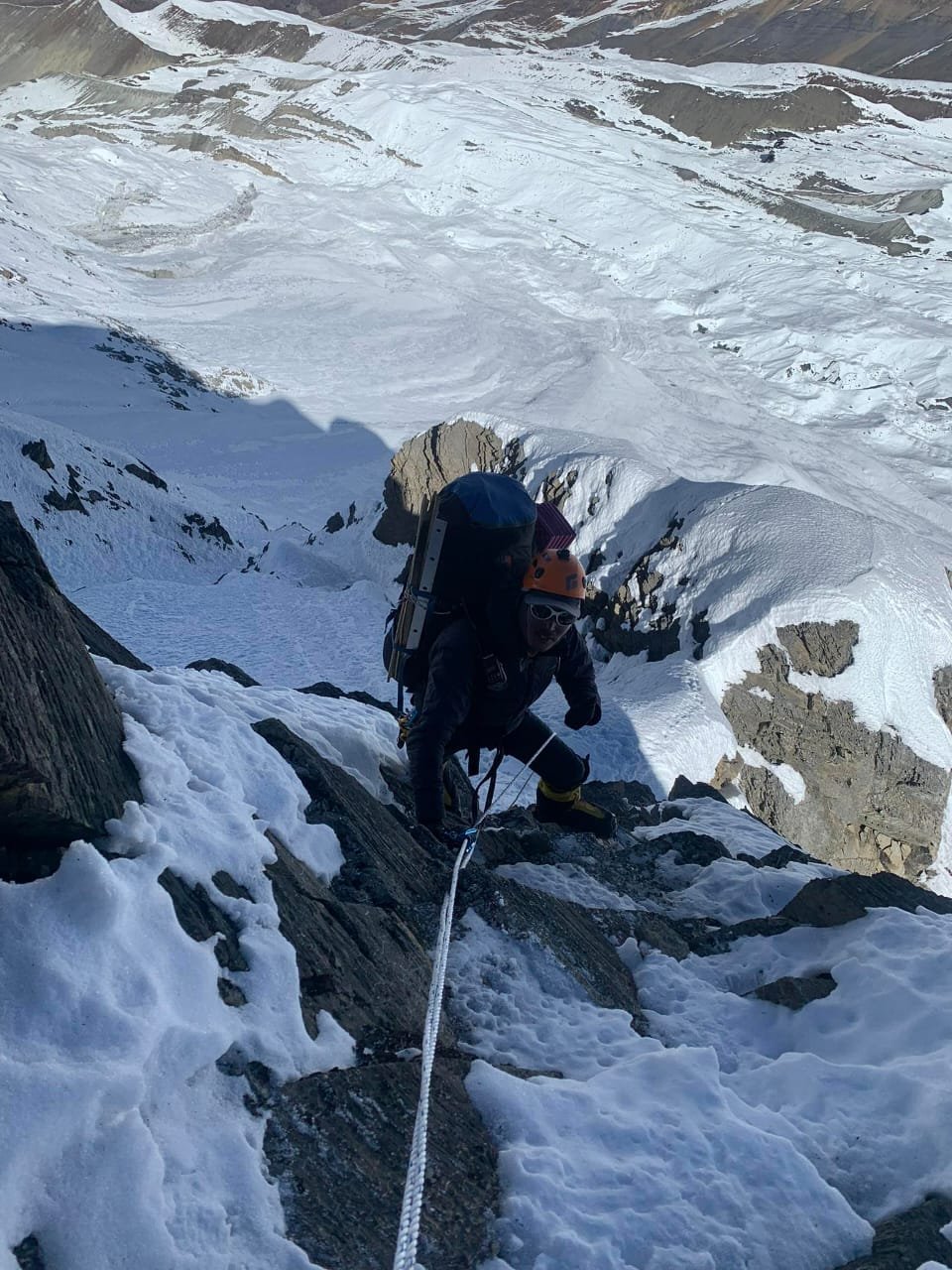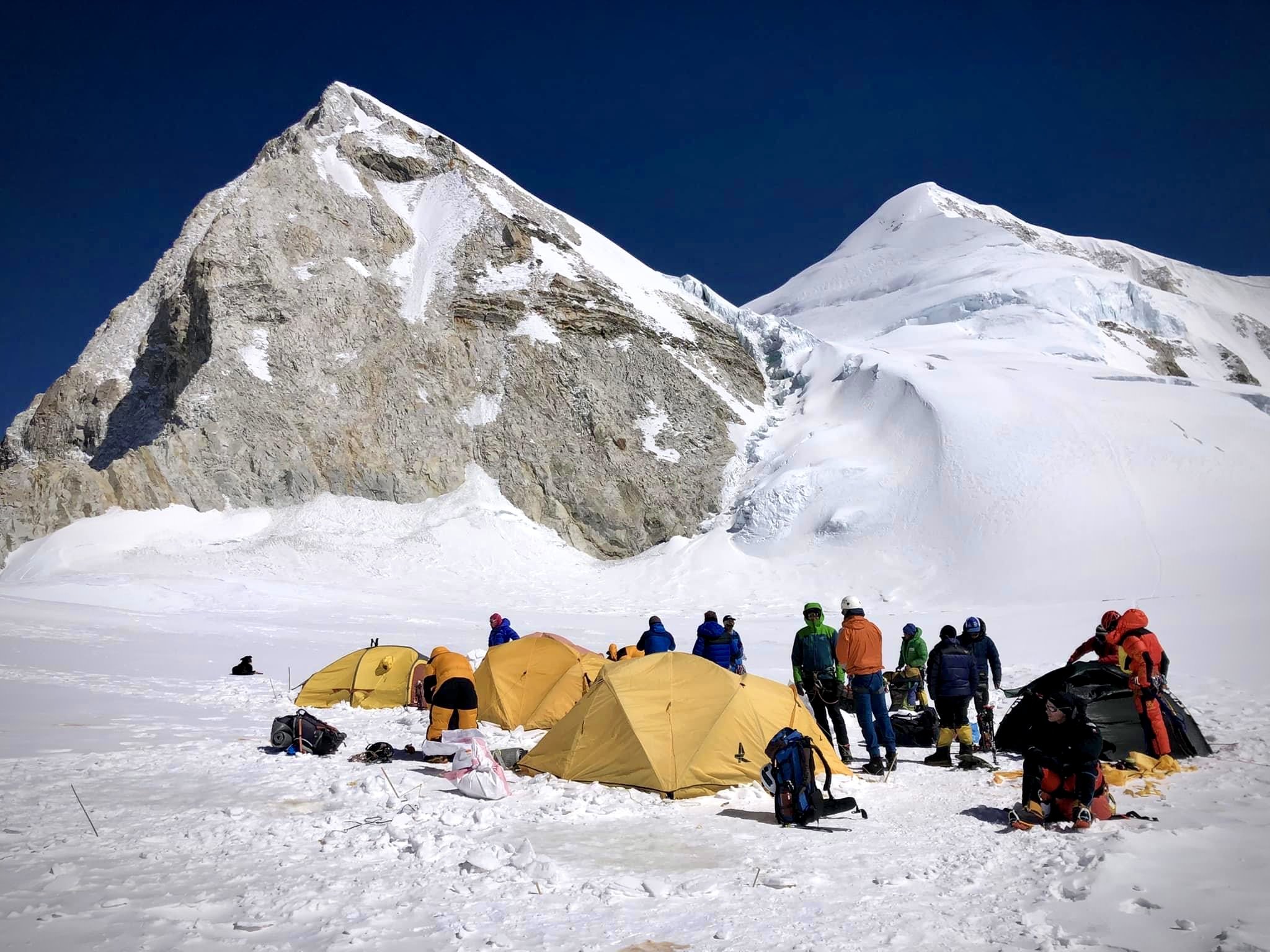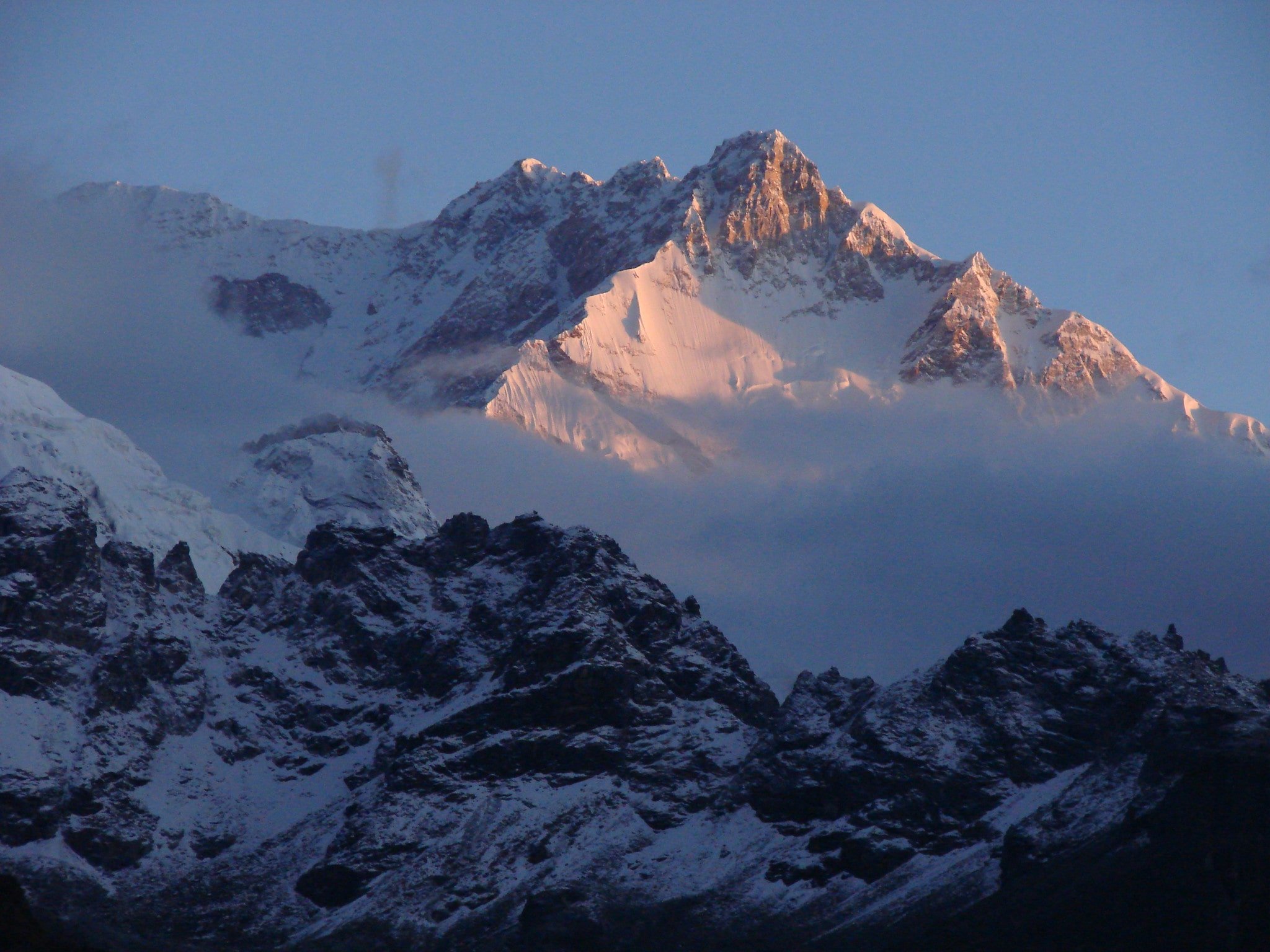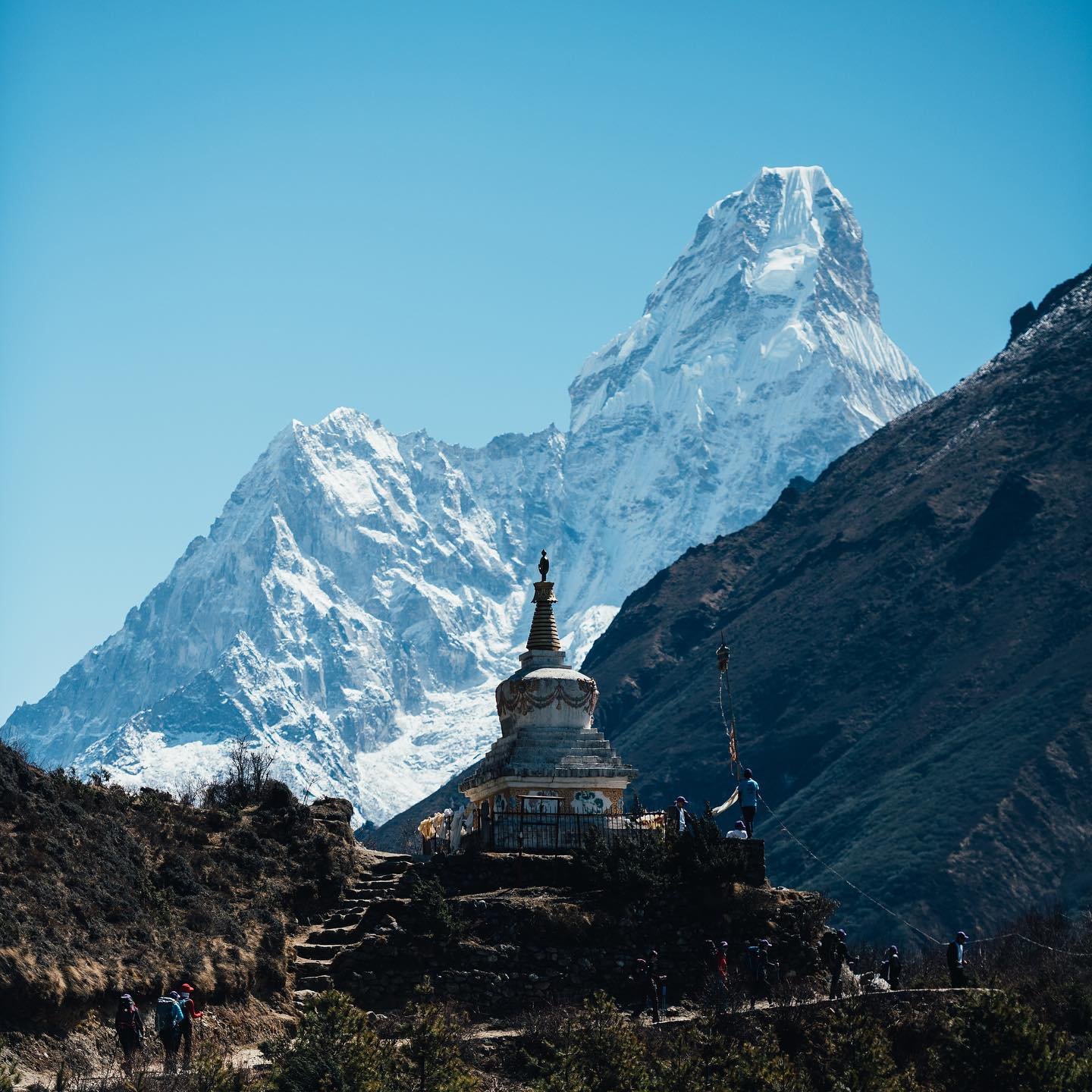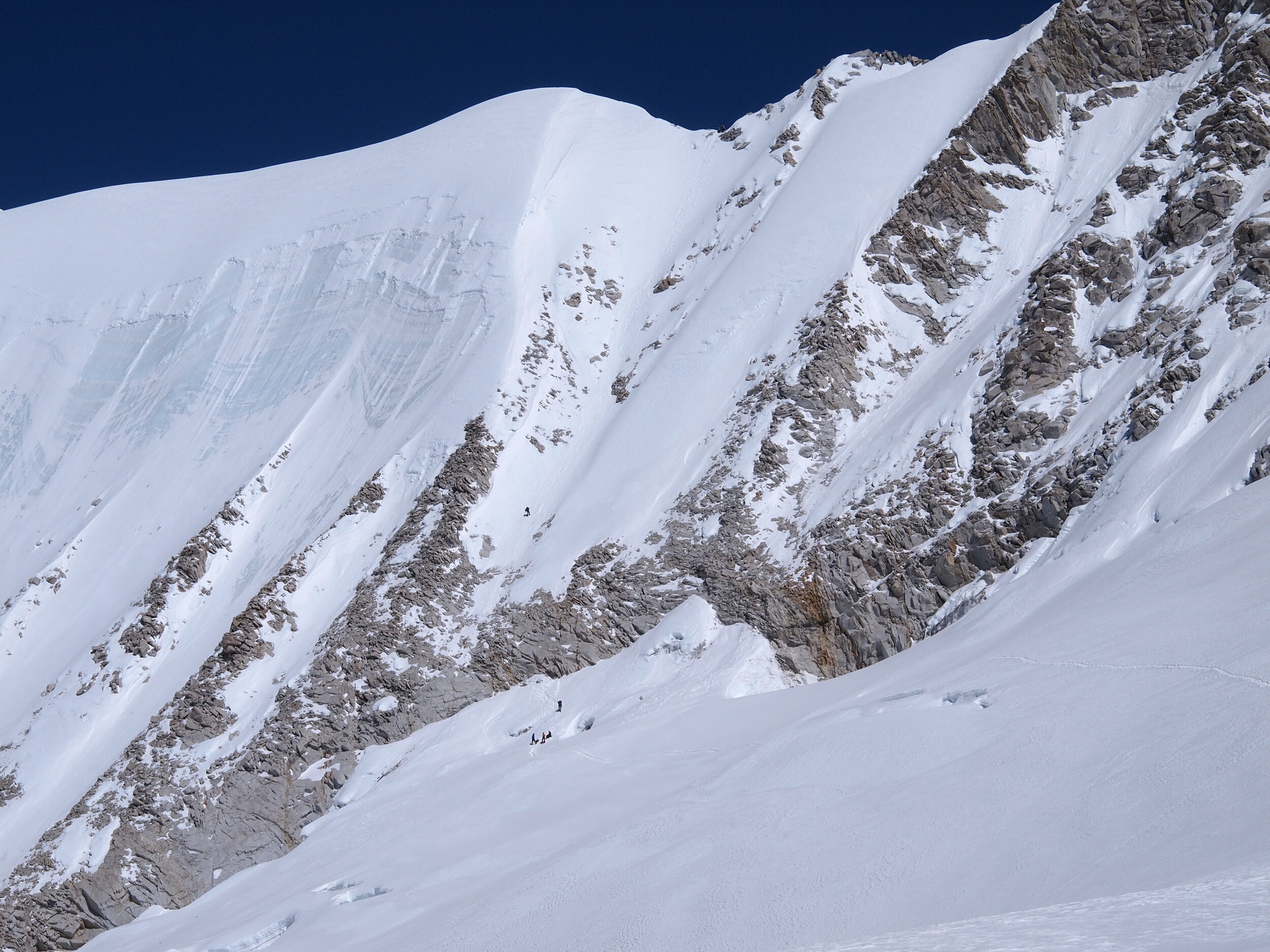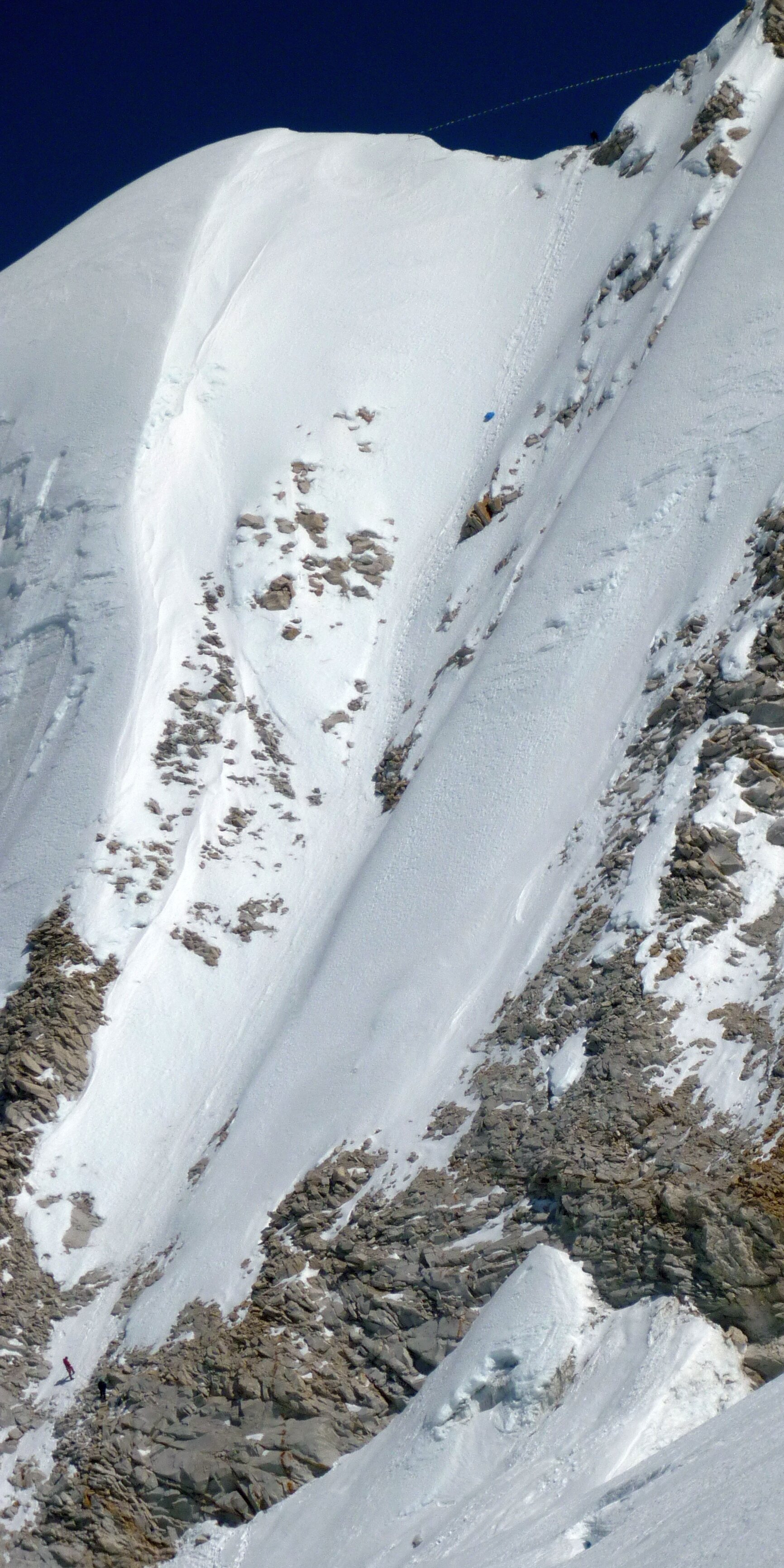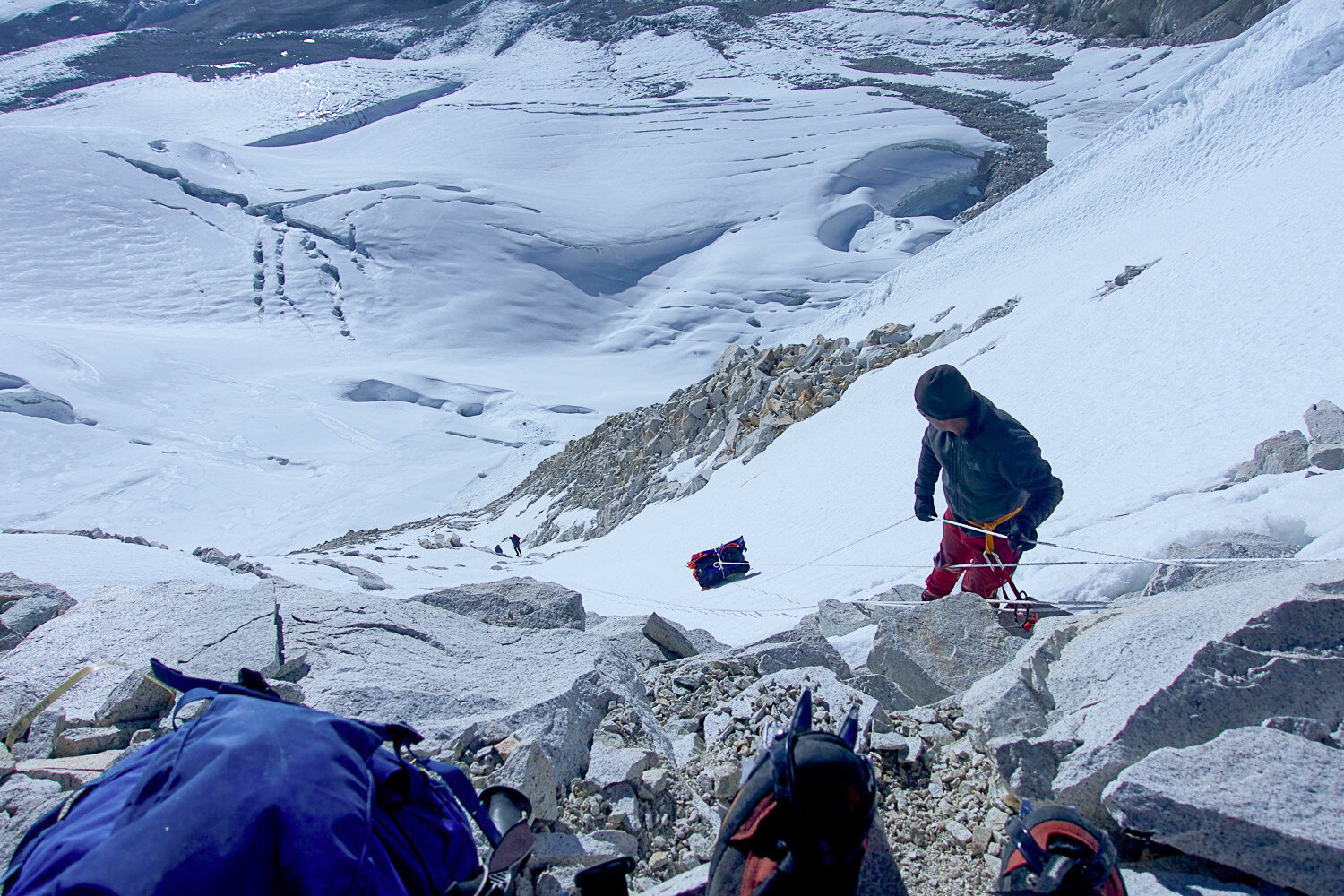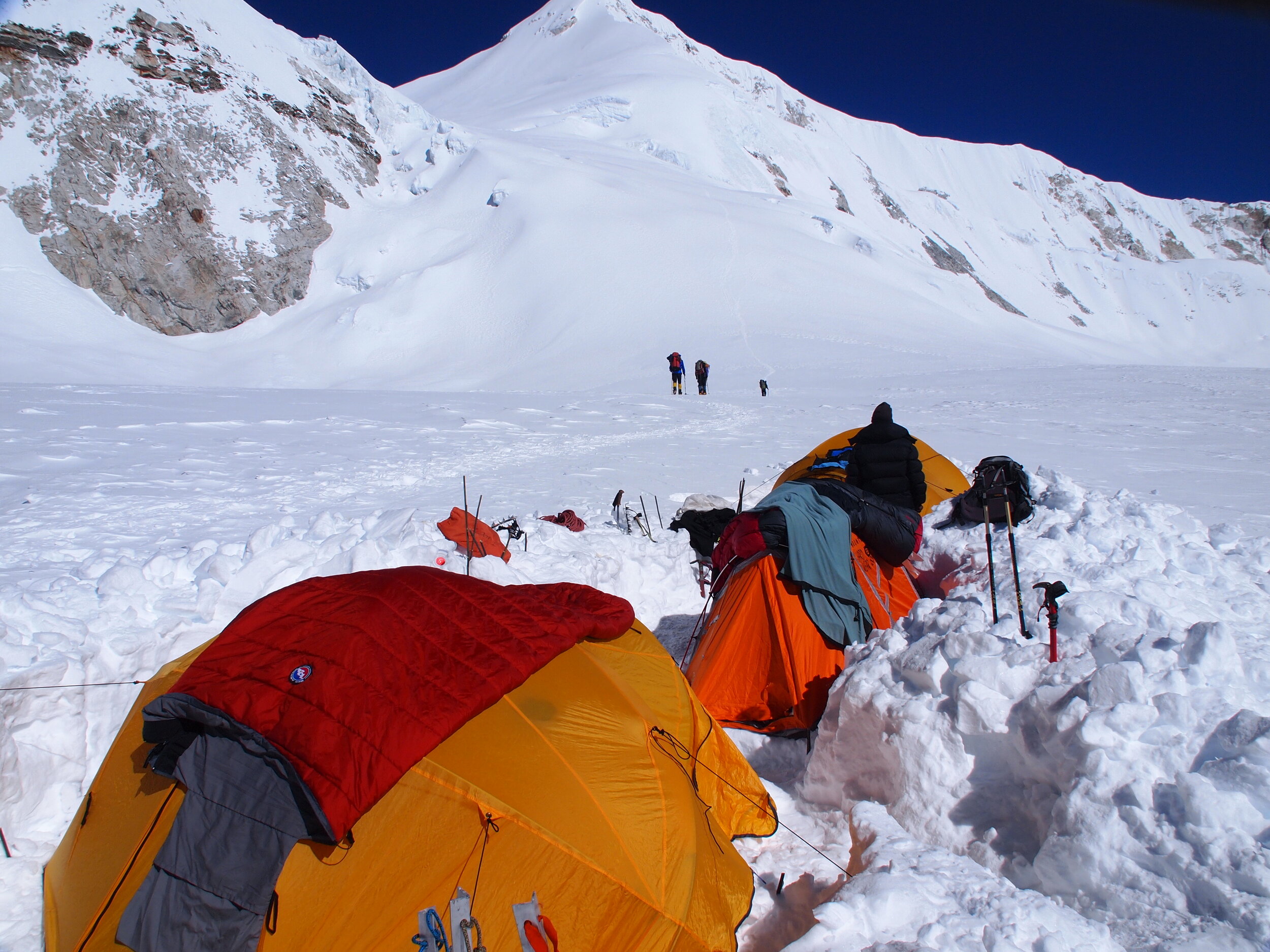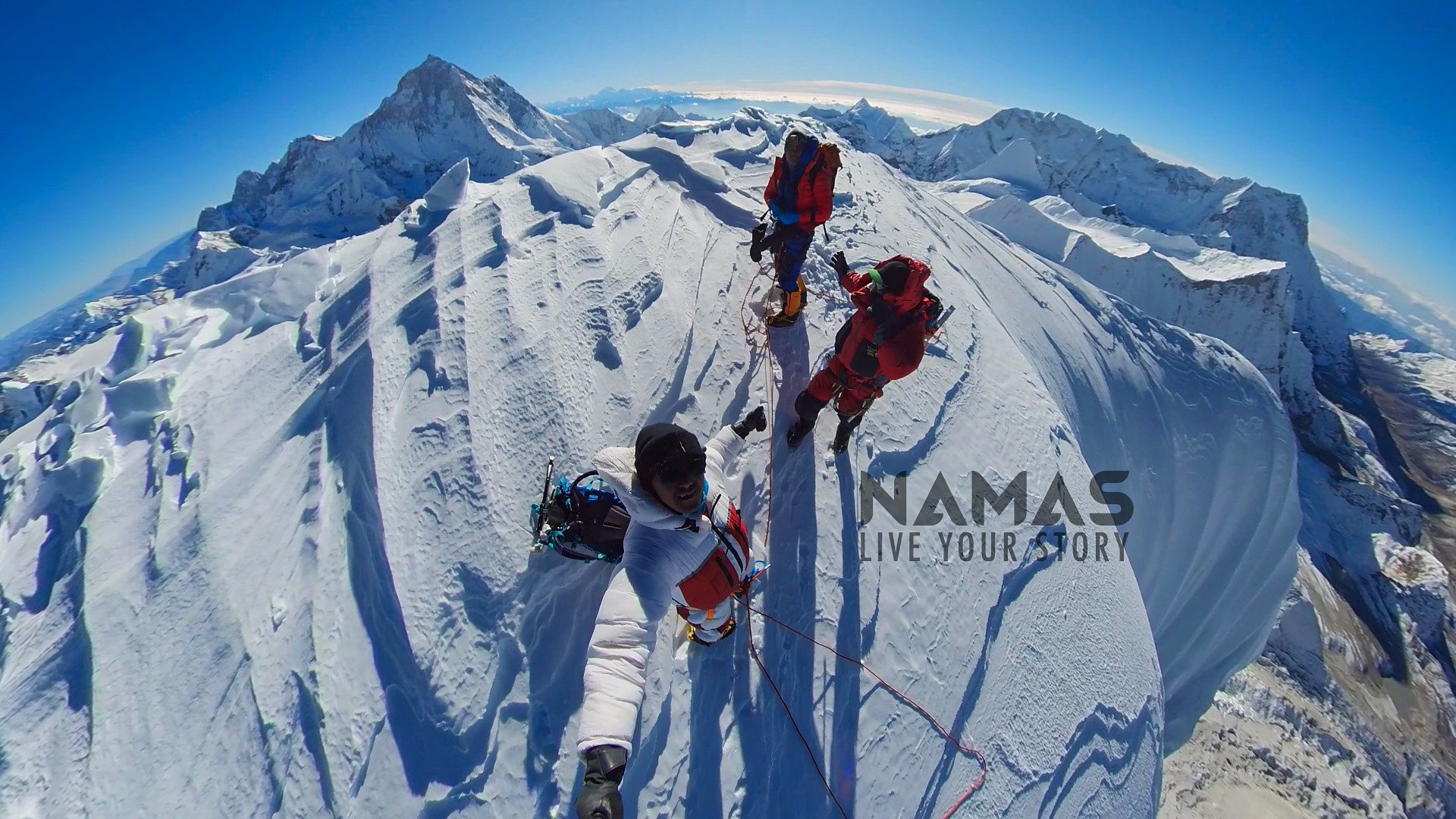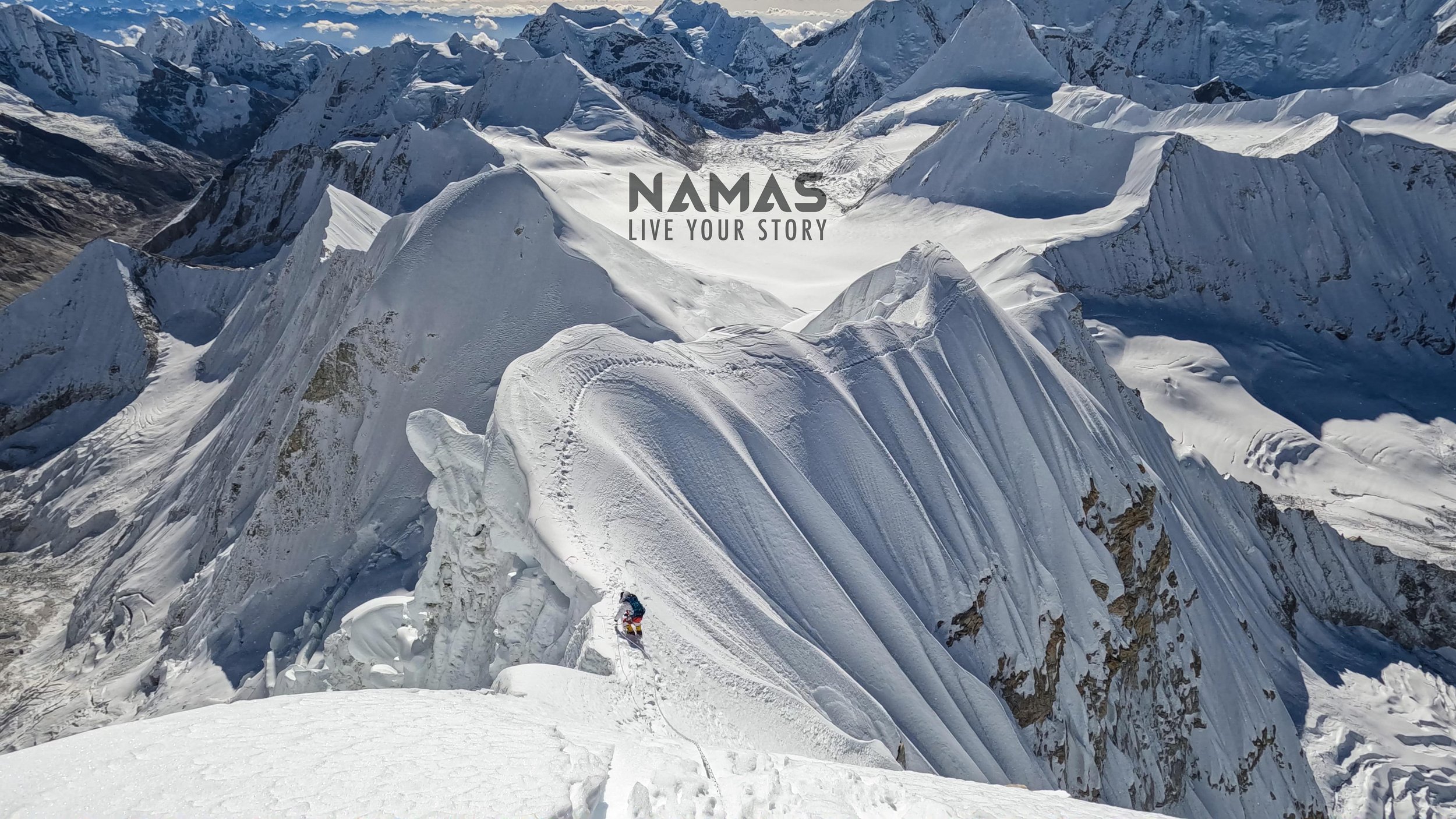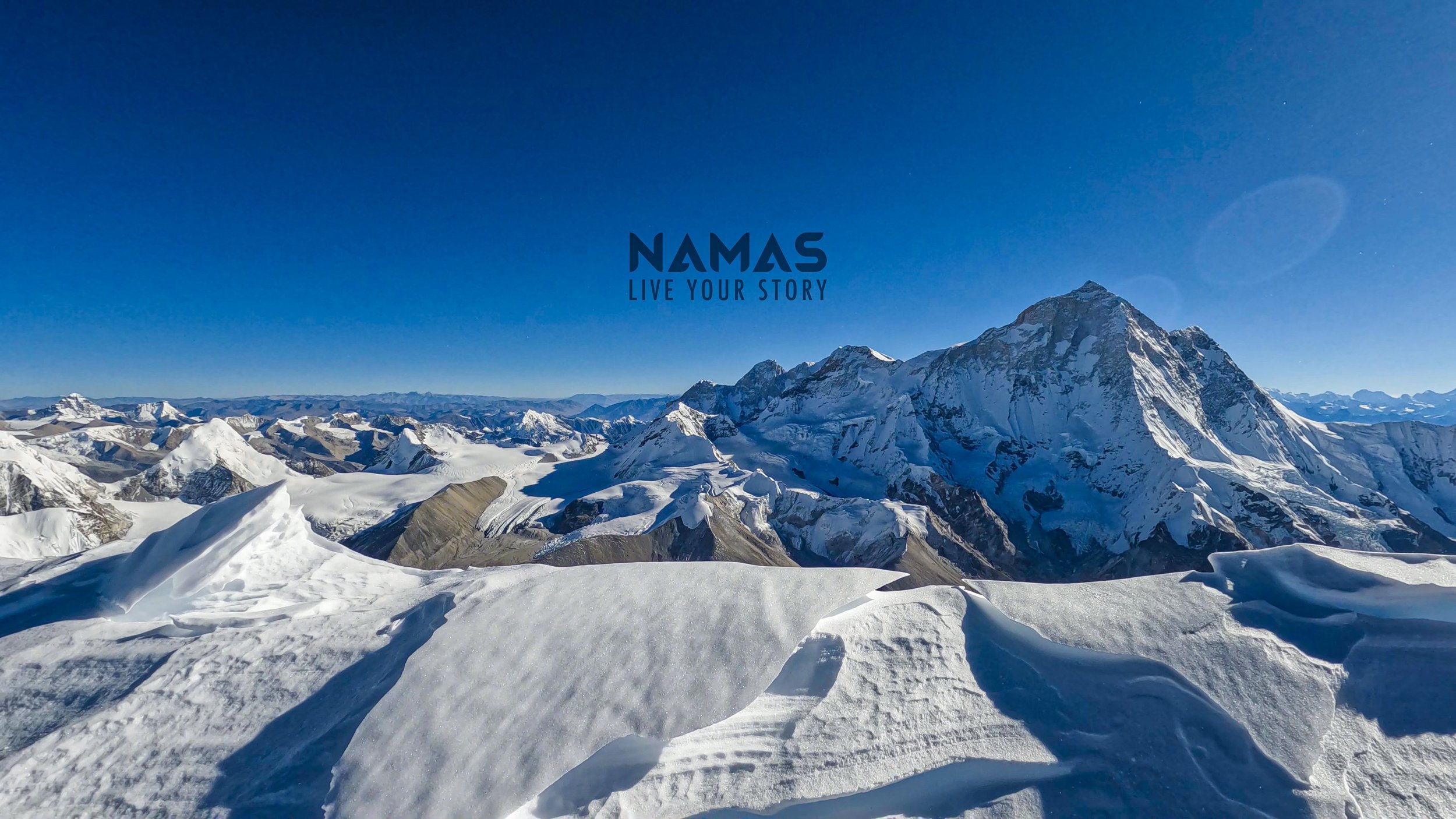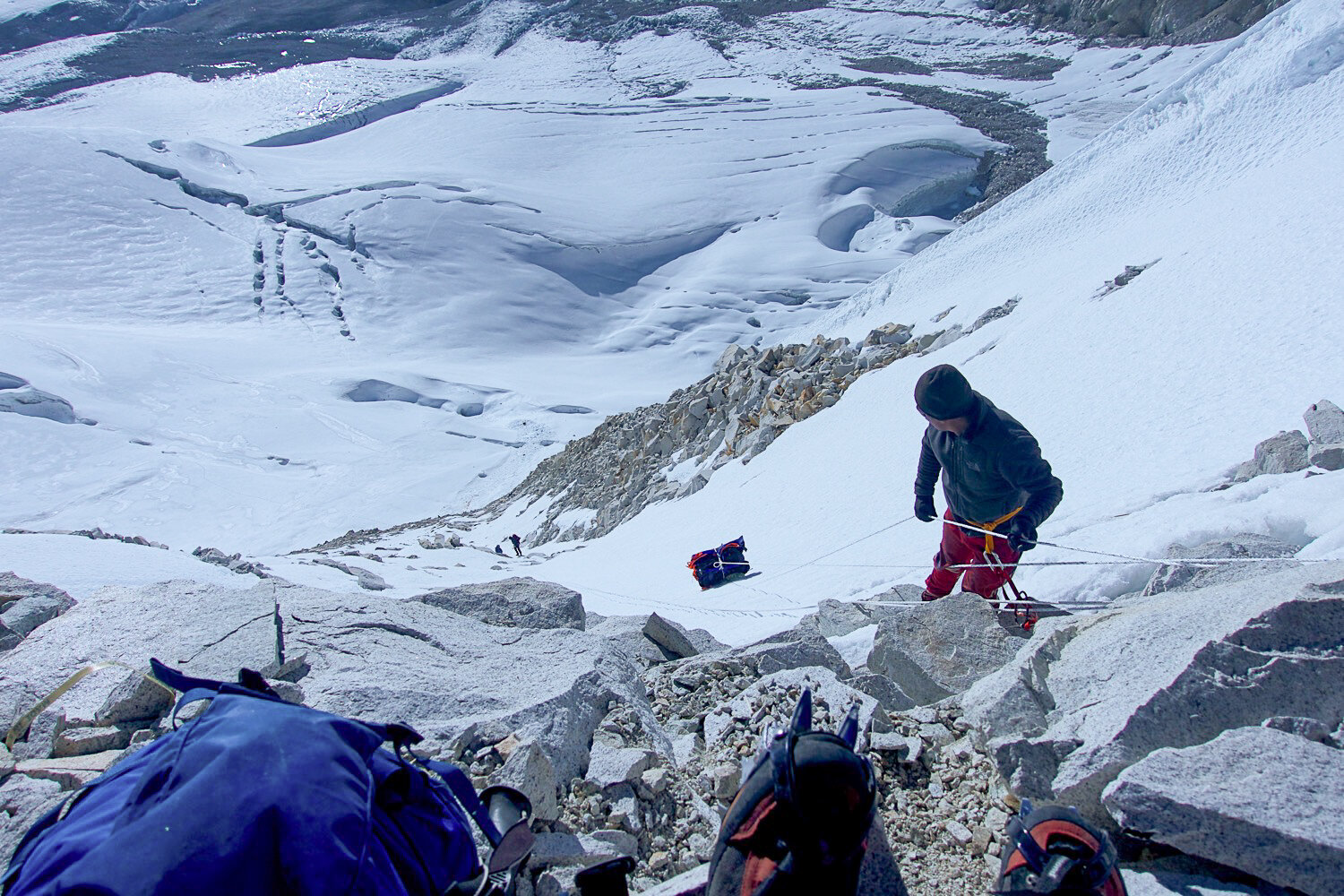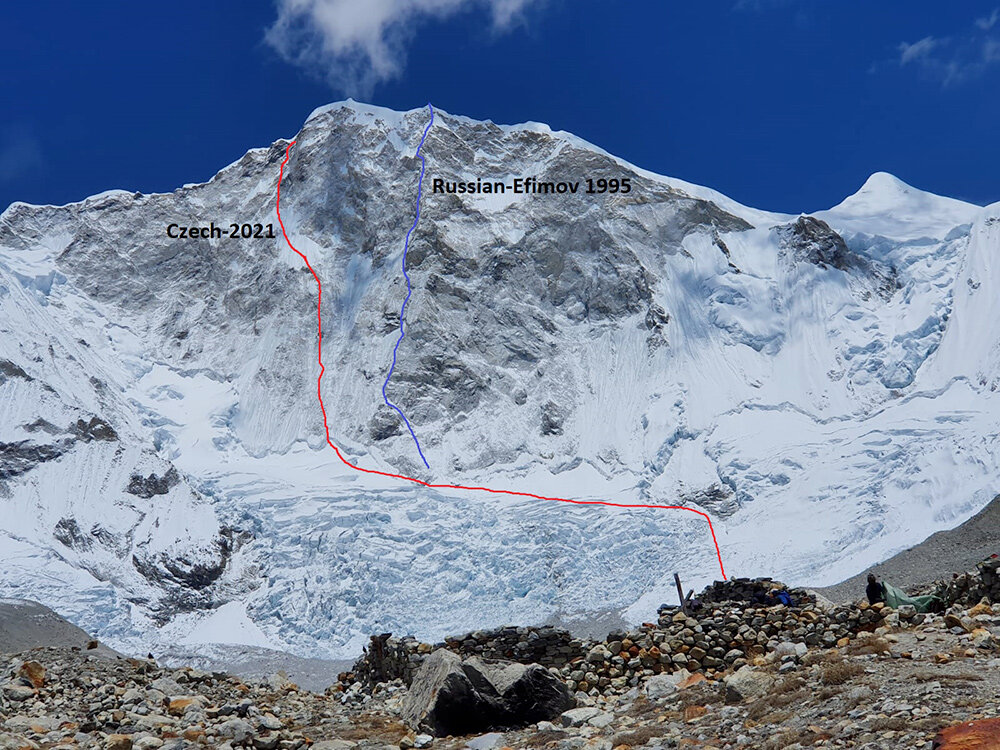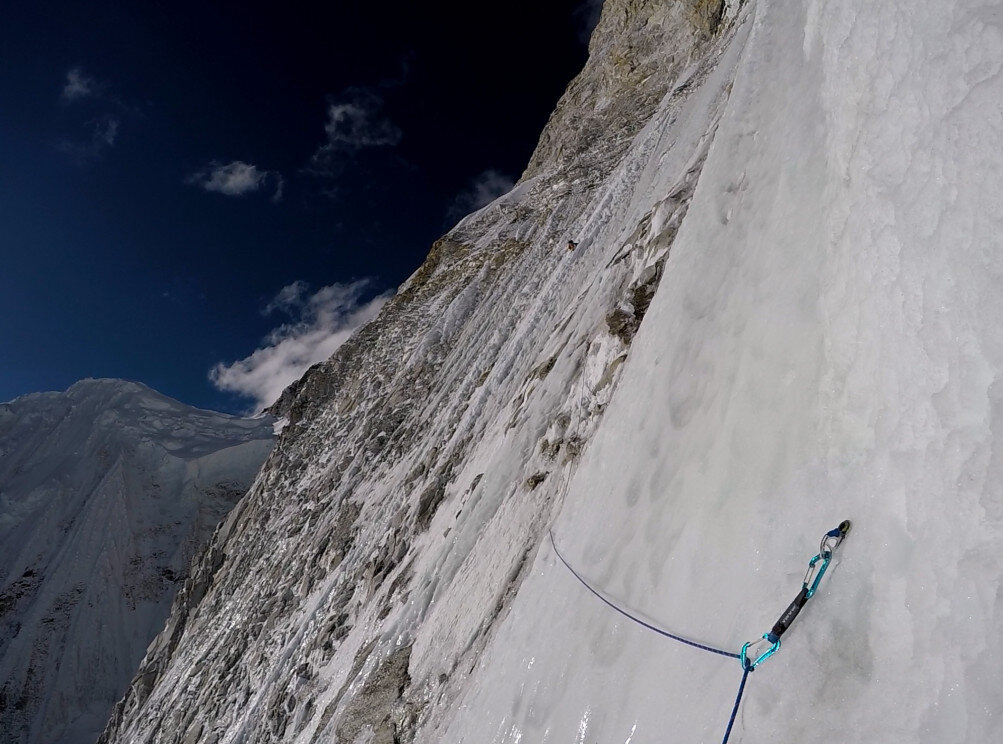Intermediate level 7000M+ Mountaineering Expeditions - Namas Adventure
In this article, we aim to introduce you to the thrilling world of 7000-meter intermediate-level expeditions. These remote climbs offer a unique blend of adventure, challenge, and joy, with fewer summits compared to their higher counterparts. A perfect mission for intermediate-level climbers, these expeditions provide an exciting opportunity to push your limits and conquer towering peaks. While 7000-meter peaks may not boast the same bragging rights as 8000-meter summits, they offer a special experience for those who seek pure joy in thin-air alpine challenges and push themselves to extreme altitudes. Whether you're testing your skills or simply marveling at the wonders of nature, embarking on a 7000-meter expedition promises an exhilarating journey filled with excitement and achievement. Below, we'll explore some of the best intermediate-level 7000M peaks that we've had the privilege of exploring, providing you with valuable information to help you plan your next adventure. We look forward to the opportunity to serve you on any expedition you choose to embark on.
Note - We will continue to expand and update our list of peaks as we explore more 7000-meter peaks in the years to come.
First on the list for intermediate 7000-meter-plus peak is Mount Baruntse. Standing at 7129 meters, Baruntse is conveniently located between the Khumbu region and the towering peak of Makalu (8646m). Mera Peak (6476m) serves as an excellent acclimatization peak before tackling Baruntse, and it can also be accessed via the Ampahu Lhabtas pass (5800m). The climb itself involves setting up two high alpine camps, with relatively fewer objective dangers, offering climbers a high success rate. Most successful summit attempts occur during the autumn season climb.
Pre-requisite requirements include climbing experience on peaks such as Lobuche East and Island Peak, Chulu West, Khumbu Three Peaks or Annapurna Three Peaks, Alpamayo, Mont Blanc, Zermatt, or other similar-grade mountains. These experiences will help prepare climbers for the challenges of Mount Baruntse.
Be ready for a very cold base camp.
Tilicho Peak, standing at an impressive 7134 meters, presents a thrilling yet fulfilling challenge for climbers seeking technical ascents in the 7000-meter peak range. The journey begins with a scenic trek through the Annapurna circuit, leading to the stunning Tilicho Lake, the highest lake in the world at an elevation of 4910 meters.
Located north of Manang in the Annapurna Region, Tilicho Peak boasts a majestic northeast ridge covered in snow, offering panoramic views of the high Kali Gandaki valley to the west and the Marshyangdi Valley to the east. Nearby lies the mystical land of Mustang to the north.
To undertake this adventure, climbers should meet certain prerequisites, such as experience on peaks like Alpamayo, Khumbu Three Peaks, or Annapurna Three Peaks, Himlung Himal and have mixed climbing grade 2-3 or ice climbing experience WIII-IV.
The standard climbing route follows the northwest shoulder, with Base Camp situated at 4800 meters at the lake's northwest end. With fewer climbers in the Annapurna mountain range, adventurers can enjoy the breathtaking landscape almost exclusively to themselves.
KHAN TENGRI 7439M
Khan Tengri 7439M, is located in Kazakhstan (highest peak). This breathtaking mountain falls on the Tien Shan mountain range of Central Asia (boundaries between Kazakhstan, Kyrgyzstan, and the Uygur Autonomous Region of Xinjiang, China), Khan Tengri offers an exhilarating challenge for intermediate climbers seeking an unforgettable adventure.
Pre-requisite requirements for this expedition include, Lobuche East & Island Peak, Khumbu 3 Peak or Annapurna 3 Peak, Alpamayo, Himlung Himal or expeditions with similar grades
Climbing Khan Tengri presents a unique set of challenges, blending technical skill with physical endurance. This expedition is also known for gaining altitude rapidly and objective dangers of avalanches are higher too making it one of the peaks with at least 7000M summits with the amount of climbers at the peak each season. Aspiring climbers should expect to navigate steep slopes, crevasses, and changing weather conditions. The weather in Khan Tengri is known for its notorious nature and is unpredictable, with temperatures dropping drastically and strong winds posing additional obstacles. However, with proper preparation and guidance, climbers can overcome these challenges and reach the summit.
Conclusion
Embarking on a 7000-meter intermediate expedition is a journey filled with challenge, adventure, and personal growth. Each of these peaks presents formidable sets of mixed challenges, combining technical prowess with classic mountaineering skills, all while demanding both physical and mental resilience. From the towering peaks of Baruntse to the technical ascents of Tilicho Peak, every expedition offers climbers the opportunity to push their limits and conquer remarkable heights.
As we continue to explore more peaks and expand our experiences, we eagerly anticipate sharing more adventures with you. Whether you're drawn to the thrill of high-altitude climbing or simply captivated by the beauty of the world's tallest mountains, there's an expedition waiting for you.
We embark on select peaks yearly and would be honored to have the chance to take you on one of these remote and less summited expeditions. Together, we can create unforgettable memories and face the challenge of the mountains, discovering just how far you can push yourselves and leveling up for even greater adventures. Dream big, prepare diligently, and let's make this climb together.
Let's go, LIVE YOUR STORY
Which 7000M mountain peak should I climb? A Guide to Choosing Your next 7000M High-Altitude Adventure: Namas Adventure
With so many amazing options available, it can be difficult to decide which mountain to choose for your next high-altitude expedition. In this blog post, we will provide you with valuable insights and considerations to help you make an informed decision and select the perfect 7000M mountain peak for your climbing aspirations.
The first and foremost is to check your past climbing Experience and Skill Level: Before embarking on any high-altitude expedition, it is crucial to assess your climbing experience and skill level. While 7000M peaks are generally less demanding than their 8000M counterparts, they still require a solid foundation of mountaineering skills and high-altitude experience. Consider factors such as previous high-altitude climbs, technical proficiency, and your ability to adapt to extreme environments.
Easy and Safe - 7000er
Himlung Himal 7126M (Highest summit success in Nepal)
Himlung Himal (7126M) is a classic Himalayan expedition known for being one of the easiest and least technical 7000 meter+ mountains to climb (although it should not be underestimated). It has the highest recorded summit success rate (according to the Himalayan Database) compared to other peaks. Himlung Himal is also renowned as one of the safest climbable peaks with fewer technical difficulties. It is located in the same Himalayan belt as other giants like Manaslu and the Annapurna massif, so you can expect stunning views of the surrounding peaks from the summit.
Expedition Highlights
Elevation: 7126M
Difficulty: 4/PD (Alpine grade link)
High camps: 2 to 3 high camps
15 days of climbing
Considered one of the safest, easiest 7000M+ expeditions with the highest recorded summit success in Nepal
Towering at 7,134 meters along the border between Kyrgyzstan and Tajikistan, Lenin Peak presents an excellent introduction to high-altitude mountaineering above 7,000 meters. Considered one of the more straightforward ascents at this elevation range, it serves as ideal preparation for attempting the Himalayan giants to 7500M or 8,000-meter peaks.
Also named Pik Lenin, this expedition begins in the ancient city of Osh in southern Kyrgyzstan, which radiates a palpable sense of history as the country's second-largest city and oldest continuously inhabited settlement. Home to approximately 250,000 residents, Osh's diverse blend of Uzbeks, Kyrgyz, Russians, and Tajiks infuses the architecture, language, and cuisine with rich cultural elements. Much as it did 3,000 years ago along the Silk Road, Osh still serves as a thriving trading hub connecting Central Asia and China. This gateway city marks the start of the journey before venturing into the high mountains.
Expedition Highlights
Elevation: 7134M
Preparatory climb for 7500M or lower 8000M peaks
One of the least technical 7000M mountain
Difficulty: AD/ 4 (Alpine grade link)
High camps: 3 high camps
Can be your first 7000M+ expedition
Mount Nun is the preeminent peak within the Nun Kun massif situated in the mighty Zanskar Range of the Indian Himalayas. This iconic mountain range, nestled in the Leh Ladakh region, contains two eminent peaks: the lofty Mount Nun at 7,135 meters, the highest summit in the area, and its slightly shorter companion, Mount Kun at 7,077 meters.
A successful ascent of Mount Nun presents ambitious climbers with a prime opportunity to garner invaluable high-altitude mountaineering skills on a classic Himalayan expedition, paving the way for future ascents of even more demanding 7,500 meter or 8,000 meter giants.
Expedition Highlights
Elevation: 7135M
Difficulty: AD/4 (Alpine grade link)
High camps: 3 high camps
12 days of climbing
Can be your first 7000M climb
Spantik 7027M, the majestic peak in the Karakoram region. This expedition is considered straightforward and less technical and offers an excellent opportunity to challenge yourself at altitudes above 7,000 meters while immersing in the beauty of the mountain area, its warm-hearted people, and its captivating culture. With a well-organized expedition, Spantik provides an affordable and rewarding climbing experience, making it a fantastic choice for mountaineers seeking both adventure and cultural exploration. Don't miss the chance to conquer this stunning peak and create unforgettable memories in the enchanting Karakoram.
Expedition Highlights
Elevation: 7027 M
Difficulty: AD/4 (Alpine grade link)
High camps: 3 high camps
15 days of climbing
Can be your first 7000M climb
Baruntse Peak is another attainable 7,000-meter summit in the Himalayas. This expedition is slightly technical and challenging climb compared to the above-mentioned expeditions. Situated amongst giants like Lhotse, and Makalu, Baruntse lies embedded within a stunning panorama of jagged Himalayan peaks. Its accessibility provides climbers with an unparalleled opportunity to develop critical mountaineering skills and high-altitude experience to prepare for future ascents of more demanding summits.
Expedition Highlights
Elevation: 7129M
Difficulty: 4/PD (Alpine grade link)
High camps: 2 to 3 high camps
15 days of climbing
Safe, challenging, and technical sections. Definitely an epic climb
Technical and Challenging 7000er
Annapurna IV 7525M (Prepare for Everest)
Annapurna IV presents the ideal mountaineering objective for climbers seeking a balance of challenge and relative safety. Part of the mighty Annapurna range in Nepal, Annapurna IV lies between the taller Annapurna II (7,937m) to the west and Annapurna III (7,555m) to the east. The established route up Annapurna IV poses fewer objective hazards and is a relatively semi-technical ascent compared to its neighbors. Of the Annapurna peaks (I, II, III, IV, and Gangapurna), Annapurna IV is considered the least dangerous and technically demanding. Despite its accessible profile, this mountain sees far less traffic than other regional giants. For climbers pursuing a balance of adventure and prudent risk, Annapurna IV stands out as an excellent choice.
Expedition Highlights
Elevation: 7525M
Preparatory climb for Everest or other 8000M expedition
Difficulty: 4/D (Alpine grade link)
High camps: 3 high camps
21 days of climbing
Challenging, and technical expedition. Should not be your first 7000er climb.
Pumori 7161m
Mount Pumori will test climbers' endurance and technical skills, though the rewards overwhelmingly compensate for the required effort. Part of the Mahalangur Himal section of the Himalayan range, Pumori lies between the Nangpa La Pass and Arun River, surrounded by giants like Everest, Lhotse, Makalu and Cho Oyu. Considered a technically demanding expedition, Pumori requires climbers to have sufficient high-altitude experience and fitness. Due to exposed ridges and several avalanche-prone sections, small groups are ill-advised. Instead, an adequately sized team is needed to establish ropes and navigate tricky passages. With relentless steepness testing both physical and mental reserves, Pumori lures only the most determined risk-takers equipped with seasoned technical expertise. For those up for the challenge, Pumori promises immense satisfaction in conquering one of the region's toughest peaks.
Expedition Highlights
Elevation: 7161M
Preparatory climb for Everest or other 8000M expedition
Difficulty: 4/E (Alpine grade link)
High camps: 3 high camps
18 - 20 days of climbing
Challenging, and technical expedition. Should not be your first 7000er climb.
With careful evaluation of your skills, experience, risk tolerance, and personal goals, you can identify the ideal 7000M mountain for your next high-altitude expedition. Do your research, inquire and consult with our team, build up your fitness, prepare your gear, and make sure you join a responsible, skilled team. The thrills of standing atop one of these iconic peaks make all the rigorous training and planning worthwhile. Whichever incredible mountain you choose, cherish and be prepared for a life-changing adventure amid some of the most dramatic landscapes on Earth. With the right preparation and positive mindset, you will return home with memories to last a lifetime.
Let’s welcome you to our yearly departure team and scale to the top of these mountains while making this an epic experience of a lifetime. Our team is ready to hear from you and help you achieve your dream adventure.
Namas Adventure Team
Live Your Story
Climbing Baruntse 7129M Choosing the Right Route - Amphu Lhabtsa Pass 5800M or Mera Peak 6476M
Climbing Baruntse 7129M is an exhilarating high-altitude Himalayan experience. At Namas, our team of experienced climbers and expedition leaders is here to guide you in making an informed decision about the route to choose. With more than 5 years of leading expeditions to Baruntse peak in this article, we will delve into the unique features, advantages, and considerations of climbing Baruntse via Amphu Lhabtsa Pass or Mera Peak, helping you make an informed choice.
Climbing Baruntse via Amphu Lhabtsa Pass
The shorter 28-day itinerary offers an adventurous route via Khumbu & crossing over the Amphu Lhabtsa Pass at an elevation of 5800M. Here are some key highlights of this route:
Technical Challenge: Amphu Lhabtsa Pass is renowned as one of the most challenging passes in Nepal, demanding advanced climbing skills. Climbers will face zigzag glaciers, jumaring up the wall face, and scrambling/traversing rocky sections. The pass rewards climbers with breathtaking views of Imja Valley, Everest, Lhotse, Nuptse, Island Peak, Ama Dablam, and Baruntse.
Fatigueness: The Amphu Lhabtsa Pass itinerary allows climbers to reach Baruntse Base Camp with less fatigue, as they will have acclimatized during the challenging pass crossing. This can be beneficial for overall performance and enjoyment during the climb.
Climbing Baruntse via Mera Peak
For those opting for the longer 35-day itinerary, Mera Peak 6476M serves as an acclimatization/training peak. Consider the following aspects of this route:
Acclimatization: Climbing Mera Peak allows for gradual acclimatization and improves climbing skills. While Mera Peak is non-technical, it still requires physical stamina and endurance. Climbers will spend a night at the high camp situated at 5800 meters and make an early morning summit push to the Mera Peak summit at 6476 meters.
Fatigue considerations: Climbers should be aware that the Mera Peak climb is physically demanding, and they may feel tired and fatigued by the time they reach Baruntse Base Camp. Additionally, the camps between Mera Peak and Baruntse Base Camp have limited facilities, including food options. Some climbers may require additional rest days after the Mera Peak climb at Kongma Dingma.
Conclusion
When choosing the route to climb Baruntse 7129M, consider the technical challenges, acclimatization advantages, and personal preferences. Climbing via Amphu Lhabtsa Pass offers a shorter, adventurous route, while climbing via Mera Peak provides acclimatization benefits. At Namas, we are here to support you on your journey, ensuring a safe and memorable climbing experience. Make an informed decision based on your skills, fitness level, and desire for adventure. Prepare for an extraordinary expedition that will test your limits and reward you with stunning views and a sense of accomplishment in conquering Baruntse's majestic peak.
Let’s go climb Baruntse. Live Your Story
Baruntse 7129M or Himlung Himal 7126M which 7000M+ mountain peak to climb? - Namas Adventure
Baruntse and Himlung Himal are perfect intermediate level and semi-technical peaks to climb at 7000M level in the Himalayas. Whatever your goals for climbing a 7000M extreme altitude expedition be, a stepping stone to an 8000er peak or climbing simply climbing a 7000er mountain peak, we highly recommend these two peak expeditions. (Putha Hiunchuli 7246M is another great option)
Both expeditions are not crowded as the 8000er expeditions (Everest/Lhotse during spring & Manaslu during autumn). Between the two expeditions, Himlung Himal has seen slightly higher climbers compared to Baruntse. (2021 Autumn, Himlung Himal 77 - 90 climbers & Baruntse 20 - 25 climbers). So, you can certain that there won’t be a crazy amount of climbers during your expedition. Having said that, it is always good to have some number of team/s in the mountain. You can never be sure when an event turns out wrong in the mountains. Every day we are playing with the forces of nature. Balance is key.
Learning from past summit data, the Himlung Himal expedition has a higher rate of summit success compared to the Baruntse peak expedition where there are several summits during the autumn season compared to 0 summits during the spring season (commercial route). Let’s look at the data from the previous 5 years of Baruntse 7129M and Himlung Himal 7126M successful summits. (commercial expeditions). Source “Himlayan Database”
Successful summits, BARUNTSE 7129M VS HIMLUNG HIMAL 7126M
So, coming to the question of which 7000M peak I should climb?
Our answer is it depends on your preference. What is it that you want from your adventure? If the summit goal is important to you (no mountain summit is 100% guaranteed) then Himlung Himal 7126M has a better odds of making it to the summit than Baruntse 7129M and is technically less challenging.
Situations change in the mountains, you never know when the next dangers pop out in the mountain, or the hazard that was there before may not even exist. Weather is a huge factor during your high camp days. You may have a clear window for the next 7+ days or it might be pouring snow and low visibility, windy for an extended period of time. Being safe and returning home safely should be your primary goal. Whatever the circumstances, you should be open to all possibilities of success or failure. What is guaranteed is a raw and thrilling Himalayan adventure in your life memoir.
With the insight data from previous years, if you would like to choose any of the 7000M expeditions mentioned above then our team at Namas Adventure is here to assist and welcome you to take on your adventure of climbing a 7000M mountain. We organize the expedition during both seasons. For yearly mountain updates and summit success, hazards in the mountains and to be part of our team on 7000M mountain expeditions or other mountaineering expeditions, please email us at - bookings@namasadventure.com. Our team will be there to assist you on your next adventure of a lifetime.
Let’s go and explore the 7000ers.
Live Your Story
Namas Adventure Team
Mountain expeditions in Nepal during the autumn season - Namas Adventure
Planning your next 6000M, 7000M, or 8000M mountain expeditions in Nepal during the Autumn season?
September - November (autumn in Nepal) is another best time to plan your Himalayan adventures. After the spring headlines of Everest, Lhotse, and Makalu stories, autumn awaits to write new chapters and records in other Himalayan peaks.
p.s. - Everest or Lhotse expedition is not organized during the autumn season. Why do you ask? There is the financial side with almost no teams to cover up for Khumbu icefall doctors fees and the weather window is generally very short.
Manaslu 8163M (Late August - September) and Ama Dablam 6810M (October - November) attract the majority of the climbers but the way we see it there are other amazing peaks that can be climbed and explored. Here are our suggestions
7000M Expeditions
Baruntse Expedition 7129M
Remote, Raw, and Rugged. Semi-technical climb in nature, Baruntse peak is one of the 7000er mountains that is accessible to climb during autumn. The knife ridge to the summit is not for the faint-hearted. Perfect 7000M expedition that gives you a solid feel of proper mountaineering (classic and alpine style) and best of all there aren’t many climbers. No traffic and one we love taking upon.
Join us here during autumn climbs (October - November)
A classic 7000er climb in the Annapurna region. Remote, safer, accessible, and less technical with a high chance of summit success. Expect some long climbing days, particularly on summit day. A moderate amount of teams are attempting Himlung during the autumn season.
Join us for Himlung Himal 7126M expedition (September - October - November) every year.
ANNAPURNA IV 7525M
Breaking above the 7500M zone, Annapurna IV 7527M is the perfect mountaineering objective for climbers who do not want to avoid crowds/traffic to prepare for their Everest or other 8000M peak expeditions. Annapurna IV is part of the great Annapurna massif range, standing tall between Annapurna II 7937M/26040FT on the western side and Annapurna III 7555M/24787FT to the eastern face. The climbing route has fewer objective dangers and is relatively a semi-technical climb.
Far away from the sight of Everest and if you want to have a feel of the classic mountaineering expedition and raw-pristine moments then the far west expedition to Putha Hiunchuli 7246m in Nepal surely won’t disappoint.
You are a pro-seasonal high altitude skier and want to up your shredding game? This peak provides you with a perfect line. We venture into Putha Hiunchuli every 2 to 3 years. Check out our next departure dates to Putha Hiunchuli on our page.
8000M Expeditions
Manaslu 8163M
Manaslu, the mountain of spirit, is the most climbed 8000M+ mountain during the Autumn season. Now with the true summit finally becoming clear to all the climbers, the final 100M traverse to the summit does not get easier. Manaslu is also considered one of the easiest mountains at 8000M level.
We organize a Manaslu expedition every season, join our ever so small and fun-loving team, not to forget to the true summit.
Dhaulagiri 8167M
Approaching Dhaulagiri 8167M
Located in the central west of Nepal, Dhaulagiri 8167 M mountain is another 8000er expedition that is organized mostly during the autumn season. Dhaulagiri attracts a handful of climbers during the autumn season. This is the world’s lucky 7th highest mountain.
Check out 8000M expedition pages for upcoming Dhaulagiri expeditions.
Kanchenjunga 8586M
Kanchenjunga 8586M
Mount Kanchenjunga 8586M is the final 8000M on the eastern flanks of the Himalayan belt. It sits right on the border of Nepal and India (Sikkim). A handful of expeditions are organised every year and some summits have been recorded during autumn season too.
6000M Expeditions
Ama Dablam 6810M
After the Manaslu climb, almost 90% of the team is focused on the Ama Dablam. Be it to summit this peak or to strategize with next season’s Everest climb. Either way, expect a decent crowd of climbers at Ama Dablam.
Join us at Ama Dablam every autumn and possibly during early winter too. For the ones that can brave the cold.
If you want to escape the gatherings of climbers at Ama Dablam and instead climb an equally challenging or may even be a tougher peak in the Khumbu region then Cholatse is a perfect mountain to climb. Do not underestimate this mountain because it does not boast higher but the climbing routes are second to none. Climbing on a long exposed knife-edge ridge and climbing ice headwalls are some amazing feats to take on at Cholatse.
Plenty of crux and not forget the ever visible Gokyo valley during your entire climbing period. Join us at Cholatse every year during the autumn season.
Note - With Everest/Lhotse expedition not operating during the autumn season, most of the certified guides (350 - 400) are not occupied and are raring to go and help climbers achieve their dream adventures in other mountain peaks.
Since autumn is another big season to achieve your dream climbs in Nepal, are you planning any of the above-mentioned mountaineering adventures? We organize, all-inclusive expeditions during the autumn season and would love to welcome you onboard our teams. Unlike others, we organize a team of max 8 small and a compact teams, which enables us to plan swiftly and have an intimate group during our expeditions.
Join us on our 6000M, 7000M, or 8000M expeditions during autumn in any given year. Let’s go on your dream adventures.
Live Your Story
Baruntse 7129M expedition, 2021 Mountain status updates - Namas Adventure
2021 wasn’t the year to be for any teams to successfully complete Baruntse Expedition. We had small team expeditions both during Spring and Autumn this year (2021).
Spring was a big risk with uncertainty around COVID 19. Still, we managed to get a small team of 3 members and after summiting Mera Peak, our team had settled at Baruntse Base camp 5460M and was preparing for our climb to camp 1. Soon enough our team and other teams, who have been together with us since Mera Peak learned that the person we came in contact with (a day before Mera peak climb) was evacuated to Kathmandu and tested positive for COVID. After learning this most of the teams decided to call off their expedition, since all the guide members and had been in contact with the sick person’s guiding team members, and any illness and evacuations at 6100M+ or around camp 1 and beyond would have been devastating.
Autumn, our team arrived up to camp 2 at 6400M but could not proceed further as we had a very unexpected storm and heavy snowfall (4ft - 5ft deep) for 4-5 days, our guides could not go past camp two and resorted back to base camp to wait for a clear window. After waiting out for 4 days our team went back to camp 1. Windspeeds were picking up to 60 - 70mph and a high risk of avalanche in the mountain was to follow up soon in the after 2 days. Our lead guide decided to call off the expedition since the client member did not want to add any additional days (5 - 7 days) to the expedition.
The only group or two people to summit Baruntse on (2021) spring was Marek Holecek and his climbing partner Radoslav Groh. They completed a new notorious route, climbing alpine style on the west face naming it “the heavenly trap” read more about their expedition on our blog post below ⬇️
We had previous (2019) reports that there is a huge crevasse opening when leading up to the summit but no one had a concrete certain report from 2020. Since Marek and Radoslav were the only two people to summit Baruntse in 2021 and returned via the southwest (normal expedition route) we approached him asking about any potential dangers and hazards in the mountains. Marek replied back to us with the following email. (Thank you very much Marek 🙏🏼).
Hi,
At about 6500 m there is a large transverse crack over the ridge, which at the time we were there went to overcome, but we had really a lot of snow there. The crack runs across the entire ridge. Now I don't know what it looks like. The second crack was around 6000 m, above the saddle we had to rope down. The crack at 6500 m was very dangerous.
Cheers Marek
_________________
Our expedition team could spot the hole/crack at 6000M.
We will be organizing expeditions to Baruntse during 2022 and 2023 and it is great to learn about these potential dangers and hazards beforehand. Our guiding team can expect these hazards at 6500M and prepare an additional safety line around this particular ridge section. Any teams heading to Baruntse during 2022 or 2023 can use this information for their expedition too, after all, teamwork is key during the expeditions and we would like everyone to be safe in the mountains.
Want to plan your expeditions to Baruntse Peak 7129M or other high-altitude mountaineering expeditions in the Himalayas? Please inquire about your preferred expedition to our teams as we have several 6000M, 7000M, and 8000M expeditions running in the Himalayas every year.
See you in the mountains.
Live Your Story
Baruntse Peak: A Climbers’ Guide - Namas Adventure
Mountain Overview
Elevation: 7129M / 23389FT
Co-ordinates: 27°52′18″N 86°58′48″E
Location: Makalu / Barun Valley
Parent Mountain: None
Summits: 3 Fore Summit / 1 Main Summit
Country: Nepal
About the Mountain
Baruntse peak 7129M is located in the Himalayan region of Nepal, just between Lhotse 8516M and Makalu 8463M. Crowned by four peaks and bounded on the south by the Hunku Glacier, on the east by the Barun Glacier flowing north-south from Cho to the north-west by the Imja glacier, and the Hunku glacier forms the south-east boundary. Baruntse mountain stretch has four ridges and four summits. The three main ridges are situated between the glaciers, the fourth main summit lies to the west near Cho Polu peak.
History
Baruntse was first climbed on 30 May 1954, via the south ridge by Colin Todd and Geoff Harrow of a New Zealand expedition led by Sir Edmund Hillary.
How to get here?
There are three main routes to get to Baruntse Base Camp.
Via Mera Peak acclimatisation / route
Via Imja lake route, climbing Amphu Lhabtsa pass 5800
Via Sherpini col 5600M from Makalu route
Baruntse Routes
RED Route (Heavenly trap - 2021) and Blue Route (Russian Efimov 1995)
Southeast Ridge (Normal/safest Expedition route)
West Face (Heavenly trap) route, May 2021 - Two-time Piolet d'Or recipient Marek "Mara" Holecek and fellow Czech climber Radoslav "Radar" Groh completed a new route ascent to Baruntse 7129M in alpine style via the west face route which they named as “Heavenly trap” (ABO+: VI+ M6+ 80°, 1300m).
Russian Efimov Route 1995
East Ridge - 1980 by Lorenzo Ortas, Javier Escartín, Jeronimo Lopez (all Spain) and Carlos Buhler (America) of a Spanish expedition led by Juan José Díaz Ibañez.
Barutnse Base Camp 5640M
Baruntse Base Camp 5460M
Baruntse base camp is at 5640M, a few kilometers further up the glacier at the entrance to the valley which gives access to East Col. From a camp set up immediately below the pass, it is easy to cross East Col to West col and reaching Camp 1 (6,146 M) at a large snowy plateau, on the Lower Barun Glacier.
West Col 5800M
210M high, 45-degree climb on a vertical snow, rock, and ice wall to reach the ridge section. This is the first technical and objective challenge to overcome at the 5800M level.
Camp 1, 6100M
After climbing up the West col, traversing through the ridge, and hiking further down climbers will come across an open area to set up their camp 1. Normally, Baruntse camp 1 sits at 6100M level after climbing the vertical wall and traversing towards the wide-open flowing Barun glacier.
Camp 2, 6400M
Camp 2 is not far from camp 2 rather a gradual steep hill to climb and gain some altitude on the fore mountains of Baruntse. Climbing mostly on ice/snow section camp 2 is established at 6400M elevation just below the steep section which is the path for summit push.
Camp 2, Baruntse 6400M
Summit 7129M
Summit push is where most of the climb is done during the Baruntse climb. Snow and ice conditions differ every year as with most of the mountains. Fixed-line ropes are usually fixed only above camp 2. The climb from camp 2 is mostly a steep uphill climb until climbers reach the ridge/cornice section around 6600M.
The climb from here onwards is the most technical part of the climb. Fixed-line ropes will be been set up by the Sherpa team and the climb is mostly on the exposed and steep, climbing/traversing mostly on the cornice formed on the ridge of the entire Baruntse mountain. Baruntse has 3 false summits with the final summit being the farthest. The summit of Baruntse is only a small surface area on the main summit.
Climbers will have to descend the same way back. Extra caution is required as this will be 4-5 hours of the slow and tiring way back with the goal to reach camp 1.
Express Itinerary
With the use of helicopters after the summit, the expedition can be shortened up to 23 to 24 days. Flying from Baruntse Base camp 5460M to Lukla.
Further extensions
(i) Makalu expedition. Continued further down via Sherpini col and then arrive at Makalu base camp to climb. Extra 20 - 25 days required to climb Makalu (with contingency days) We highly recommend spring season if you are to plan Makalu expedition as the weather is more stable during spring than the autumn season.
(ii) Ama Dablam and Island Peak. Climb the famous and stunningly beautiful Ama Dablam. A technical climbing challenge. Can be planned during both Spring (less climbers) and Autumn (busier many climbers expected) season.
(iii) Island Peak and Lobuche East. Bag some more 6000M+ expedition in the Khumbu valley
Bonus: Amphu Lhabtsa Pass
Amphu Labtsa pass is a glaciated pass located at the head of the Honku valley. The base of the valley is located at 5,000 m (16,400 ft) and contains several glacial lakes. Amphu Lapcha is zigzag glaciers formations with base camps at North and south where we have to stop for a camp night. View from Amphu Labtsa passes Imja valley, Everest, Lhotse, Nuptse, Island peak, Ama Dablam, Baruntse, just awesome.
Are you planning to climb Baruntse 7129M mountain peak someday in the near future? If yes then our team specializes in remote mountain peaks in the Himalayan region. We go where few ventures, safely access and navigate these parts of the Himalayas, creating new possibilities in the mountains.
For more information on our Baruntse expedition or Baruntse Express expedition or any of our other international expeditions check out our website. (Call/WhatsApp) - +44 7446976060 or send us an email at bookings@namasadventure.com
Go. Explore more.
Live Your Story
Experiences, fitness and skills required to climb Baruntse Expedition - Namas Adventure
What previous experience is required to climb Mount Baruntse?
This is probably one of the most important questions we get asked a lot, and climbers will need to weigh in with their previous expedition when planning their next high/extreme altitude peak expeditions. Baruntse peak climbing is no different. This 7000M+ peak does come with a substantial set of challenges and objective dangers. First, you will have to be very comfortable and experienced with ropes, climbing with climbing gear, ascending and descending on fixed-line, and bearing crisp cold climbing conditions.
Preferred Previous mountaineering experiences
Anywhere above 4000M - 6500M+ peaks with semi-technical to technical climbs around the world. For example Alpamayo, Huscaran, Aconcagua, Mt. Kenya, Denali, Mt. Blanc, Mt lenin, Ebrus. If you have experience climbing semi-technical to technical peaks with long ascents and descents, you may be qualified to tackle Baruntse and other 7000M peaks in the Himalayas. It's important to consider your previous expedition experiences and determine if you have the necessary skills and comfort with climbing techniques, such as using ropes and climbing gear, ascending and descending fixed lines, and handling cold conditions at high altitudes.
Fitness level - 4
We have graded fitness level 4 for Mount Baruntse. To successfully climb Mount Baruntse, a high level of physical fitness is necessary. This includes exceptional overall fitness, endurance, and strength. Mental toughness is also essential for these demanding expeditions. Prior experience on semi-technical to technical peaks with long ascent and descent sections is preferred for this challenge. It is important to be in top shape and have the necessary skills to tackle this physically demanding climb.
To prepare for the physical demands of climbing Mount Baruntse, it is recommended to have an exceptional level of all-around fitness. This may include the ability to run a half marathon or marathon, cycle for 2-3 hours, or hike with a load of 20 kilograms for 3-4 hours. Additionally, mental toughness and previous climbing experience will also be beneficial for success on this expedition.
Good strength and muscle endurance training routine can be implemented with a variety of approaches such as taking part in cross-fit sessions and kettlebell training.
Skills to be learned.
Guides in Nepal will advise you to keep it real simple. So there are four basic things you must - must know.
Figure 8 knot and how to tie a stopper knot at the end of the rope.
Ascending/jumaring on fixed-line and abseiling with super 8 belay device or ATC descender in multi-pitch sections. You will have to be very very careful and well-rehearsed on abseiling since there is no room for errors when descending. You only get that one chance when coming down so you will have to be super careful. And for safety backup have ‘prusik knot’ tied on the main rope.
Climbing, traversing and hiking with crampons on for long-duration on ice, rock, and snow surface.
Performing snow arrest and safely getting back up if by any chance climbers slip and slide.
As climbers joining Baruntse expedition will already have previous experiences, we recommend climbers to have extra essential skills in their climbing arsenal. If you cant find mountains to climb near your place, rock climbing indoors and outdoors is one of the best ways to keep refreshing your rope skills and staying in climbing shape.
With all commercial expeditions, the majority of your expedition is handled and taken care of by your expedition company. Having competent members from operational management to guiding leaders on the field is key for any successful expedition. Once you are signed up and you’ve got the necessary skills and experience all you need to be is physically and mentally prepared that is your commitment to fitness training.
Challenge yourself.
Go. Live Your Story
Are you planning to climb a remote, rugged, and challenging 7000M+ peak with substantially less objective danger? Whether your goal is simply to climb an extremely high altitude peak, explore and climb remote peaks in Nepal, or progress to higher 8000M+ peaks then our team at Namas Adventure/Expedition is set for your next adventure. Email - bookings@namasadventure.com or Call/Whatsapp us at +447446976060 and our team will be there to answer your inquiry and instruct you with any questions regarding the expedition.
Baruntse New Route (West Face "A Heavenly trap")
New West face route. Heavenly trap. 2021 May Completed by two-time Piolet d'Or recipient Marek "Mara" Holecek and Czech climber Radoslav "Radar" Groh
Two-time Piolet d'Or recipient Marek "Mara" Holecek and fellow Czech climber Radoslav "Radar" Groh completed a new route ascent to Baruntse 7129M in alpine style via the west face route which they named as “Heavenly trap” (ABO+: VI+ M6+ 80°, 1300m). They dedicated this route line to their friend Petr Machold & Kuba Vanek, who passed away in this same route 8 years ago.
Marek true to his alpine style described this as one of his hardest climbs. On top, they completed this feat during Cyclone YASS. The pair originally planned and packed for 6 days of the climb instead they had to spend 10 days up in the walls with 7 bivouac camps. Sounds gnarly and super intense. Marek outlines and gives us a glimpse they suffered and endured everything that was thrown at them.
COMPARING BARUNTSE TWO ROUTES
Standard route vs Heavenly trap. Difference of Classic mountaineering style vs Alpine style
In the image above you can see the difference between the two routes (In Green - Heavenly trap, Alpine-style vs In Blue - Standard route, classic mountaineering style). Almost all expedition companies (including Namas Adventure/EXPEDITION) organize Baruntse expedition with classic mountaineering style. This style and route are easier and safer if you compare it with the alpine climbing style. Not to say mountaineering style is easy but when making the comparison it is pretty much clear which climbing style is tougher.
Two Alpine style routs of Baruntse. Russain-Efimov 1995 & Czech 2021.
We highlight some of the moments from this epic climb.
“The Heavenly Trap” route (ABO+: VI+ M6+ 80°, 1300m). Westface. Baruntse. Image courtesy - Alpine Magazine.
21st May 2021 - Soon after navigating the glaciers they had to bivouac just below the base of the mountain.
22nd May 2021 - 10 Hours on crampons and climbing. Hard ice climb starts from the lower section. Tougher sections as they climb higher. Bivouac in sitting position.
23rd May 2021 - Good weather. Diagonal lead climb. Slow progress and lots of energy used. Tent in snow rib and bivouc.
24th May 2021 - Most difficult passage of the ascent. Climbing during heavy snowfall. Snowfall and wind all night.
25th May 2021 - Bad weather, no option but to climb. Plan to summit early but with snowfall and wind making it tough on the mixed section which will take all day. Summit around 4 PM in foggy conditions and low visibility. No summit cheers or photos as the weather are at its extreme. Set up the tent and wait it out.
26th - 28th May 2021 - Devlisih weather. Struggling even to boil water or take a piss. Wet, cold, frozen and pray it all settles down. Clears snow several times from the tent.
29th May 2021 - Weather improves and this is the opportunity. Descends down 1000M. Risk of avalanche so descends slowly. Impossible to make it to the glacier hence the final and another brutal bivouac awaits.
30th May 2021 - Beautiful morning and with this opportunity they call helicopter evacuation via satellite phone. Finally, around 7 am the helicopter evacuates them and flies them to Lukla.
Radoslav "Radar" Groh (left) and Marek "Mara" Holecek (Right)
Find our more detailed interview provided by Marek in the climbing magazine and alpinist magazine.
Video
Want to climb Baruntse (Classic Mountaineering style) in the remote Makalu/Barun region of Nepal? For more information on our Baruntse expedition or Baruntse Express expedition or any of our other international expeditions check out our website. (Call/WhatsApp) - +44 7446976060 or send us an email at bookings@namasadventure.com
Visual Journey of Baruntse Expedition - Namas Adventure
The experience of climbing Baruntse is one of the most thrilling climbs in the Makalu Barun Valley. Not only is the climb beautiful and raw but it is physically challenging. Land in the buzzing historic city of Kathmandu following then to the famous Lukla airport. From there trek through the Khumbu region to enter into thick jungles of the Barun Makalu region to climb the icy summits of Mera. After acclimatizing well at Mera, the following adventure leads to the summit of Baruntse.
Climbers pass through several beautiful villages and as we reach Mera BC our alpine camping begins. Once climbers reach Baruntse base camp we rest there and prepare for our Baruntse Summit. The climb demands an intermediate level of skill and past experience and our team members are made up of highly experienced climbers. Expect a little bit of everything on the route – scrambling on the rock, climbing on steep ice/snow, and multiple camps on the mountain. Follow along as we describe the entire journey in images, as we take the beautiful yet challenging journey up to the summit of Baruntse 7129M.
Boudhanath, Kathmandu
Arrive in the vibrant and beautiful city of Kathmandu. Our team picks you up from the airport and takes you to your hotel. There you rest and can explore the cities vibrant culture and traditions. Boudhanath (Buddhist shrine) is one of the places where you can explore.
Tenzing - Hillary Airport, Lukla, Khumbu, Nepal
Expect to reach early at the airport as most Lukla flights are in the morning. Once we arrive in Lukla (40 Min flight) our expedition starts. Porters load their packs meanwhile our climbers get their breakfast and excitement begins.
Trek through the beautiful villages passing through lush jungles and rugged trails. Climbers will come across the jungles of Rhododendron and other wild trees. Also, lots of mules and Sherpa porters along the first two days of the trek.
Trek through beautiful villages and stay in local tea houses
Monasteries and other cultural sites are a perfect detours to explore.
Once you enter Makalu Valley the mountains open them selves and climbers will be walking very close surrounded all around by the Himalayas.
Climbers can expect to see a lot of high and dry granite walls and Himalayas all around when trekking to higher tea houses and camps.
As soon as we enter Makalu Barun Nation park climbers will be able to see moraines and glaciers flowing through the Himalayas. Mera-la Glacier can be seen in the far distance just below the clouds.
Climbers and porters climbing Mera - La glacier, ascending higher to Mera high camp. From Mera-la the real alpine mountaineering begins.
Mera High Camp 5460M is one of the most interesting high camps during your expedition. We camp here for a night before making our early summit push to Mera Peak summit.
Mera Summit 6476M. This is one of the most spectacular and accessible climbs for anyone with even no climbing experience before. Mera summit offers a 360 panoramic view of surrounding Himalayan peaks. Everest, Cho-Oyu, Makalu, Lhotse, Kanchenjunga, Ama Dablam, Baruntse, and other uncountable amounts of 6000M and 7000M peaks are visible on a clear summit day. A visual galore to satisfy your adventure soul.
Heading towards Seto Pokhari
After Mera Peak summit, the journey heads further deep into Hunku valley taking us through base of Chamlang and other Himalayan peaks finally arriving at Baruntse base camp 5460M.
Namas team, Baruntse base camp.
Puja ceremony at Baruntse Base camp. After a day of rest, puja is organised seeking permission from the mountain god for safe passage when climbing the mountains. A monk recites and performs the rituals meanwhile all the climbers take care in this ceremony. Spirits are high and blessings are offered and everyone is to be ready for their final part of the expedition. Mentally, physically and spiritually.
West Col to Camp 1 (6100M) is one of the challenging objectives of the expedition. Once climbers leave from base camp, it takes about 2 hours to reach the crampon point. All expedition gears are then worn and after another 45 min hike on icy surface climbers reach the base of 200M vertical wall. After 2-3 hours of jumaring climbers arrive on a flat Baruntse plateau. The lead guide then advises all the team where to set up the first camp.
Camp 2 (6400M)
Camp 2 (6400M) is a short 2 - 4 hour ascent about 400M - 500M high. Gradually going higher climbing team sets up the camp just below the Baruntse ridge.
Namas Guide Pega Sherpa can be seen descending/traversing the exposed Baruntse ridge at 7000M elevation.
Climbers leave early pushing for the Summit bid. Most of the climbing is done in the ridge section of Baruntse. This is the most challenging and dangerous section of the entire climb. After passing from three false summits finally, climbers will reach their ultimate destination. Expect a long and challenging climb.
Namas Baruntse team Pega, Nima and Chewang Sherpa successfully summited Baruntse 7129M and fixed the rope to the summit paving way for other team members.
🏔Makalu 8463M seen in the right hand side, Summit of Baruntse 7129M
Baruntse Summit 7129M. Lying just between the Great Lhotse wall and Makalu.
Fish eye view of Amphu Lhabtsa pass 5800M. Another ridge to Baruntse on the right. Everest and Lhotse in front of the climbers (between the clouds). This is the wall between Khumbu and Makalu/Huknu valley.
For more information on our Baruntse expedition or Baruntse Express expedition or any of our other international expeditions check out our website. (Call/WhatsApp) - +44 7446976060 or send us an email at bookings@namasadventure.com


